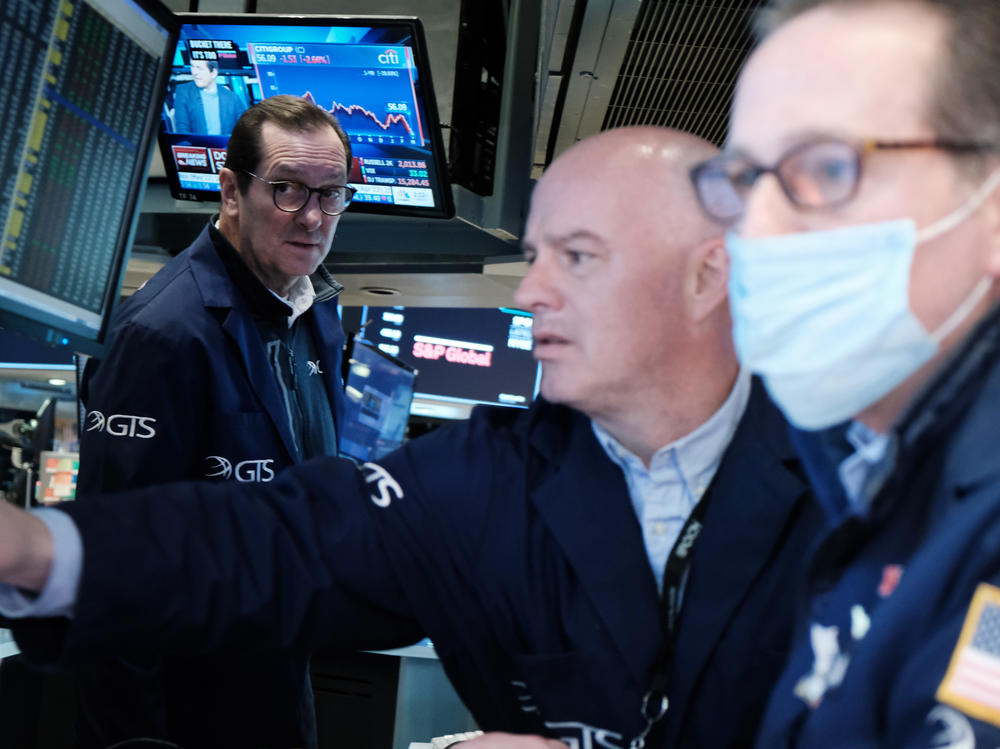Section Branding
Header Content
It keeps getting worse for stocks. Dow sinks and enters what's called a correction
Primary Content
Stocks sank on Monday, with the Dow Jones Industrial Average falling nearly 800 points after crude prices touched their highest level since 2008, raising fears about the global economy.
The Dow now joins the S&P 500 in what's called correction territory, or a drop of more than 10% from recent highs. Meanwhile, the S&P 500 lost nearly 3% on Monday to post its worst daily loss since October 2020.
The Nasdaq fell more than 3%. It has now entered what's known as a bear market, or down more than 20% from its record high in November. The Nasdaq had been flirting with a bear market in recent weeks.
The declines extend what has been a miserable year for Wall Street, with all three indexes falling in each of the previous two months.
The S&P 500, for example, lost $1.08 trillion in market value on Monday and has lost a total of $4.76 trillion for the year, according to S&P Dow Jones Indices.
Potential ban on Russian oil imports spooks markets
Investors were spooked after U.S. Secretary of State Antony Blinken told CNN on Sunday that the U.S. and its European allies were in discussions to potentially ban oil imports from Russia after the country's invasion of Ukraine.
The U.S. and Europe have so far avoided directly sanctioning Russia's energy exports. Adopting such a move would mark a major escalation from the current round of comprehensive financial and economic sanctions.
The news briefly sent Brent crude, the global benchmark, to above $130 per barrel, its highest since 2008.
Higher energy prices threaten to worsen inflation in the U.S., which is already at its highest level in 40 years. The impact would be worse for Europe, which imports a substantial part of its energy needs from Russia.
"The crippling effect of oil prices above $130 would send many European economies into a recession," said Edward Moya, a senior market analyst at OANDA, in a note to investors.
Gas prices are surging
In the U.S., gas prices have already hit their highest since 2008, averaging $4.06 per gallon, according to AAA. The highest average on record was $4.11, in July 2008.
Whether European allies would agree to restrictions on Russian energy shipments is unclear.
"The U.S. can handle not having any Russian energy supplies," Moya says. "But that is not the case for Europe. Europe is working on lowering its energy dependence away from Russia, but that won't be noticeable until next year."
Copyright 2022 NPR. To see more, visit https://www.npr.org.

